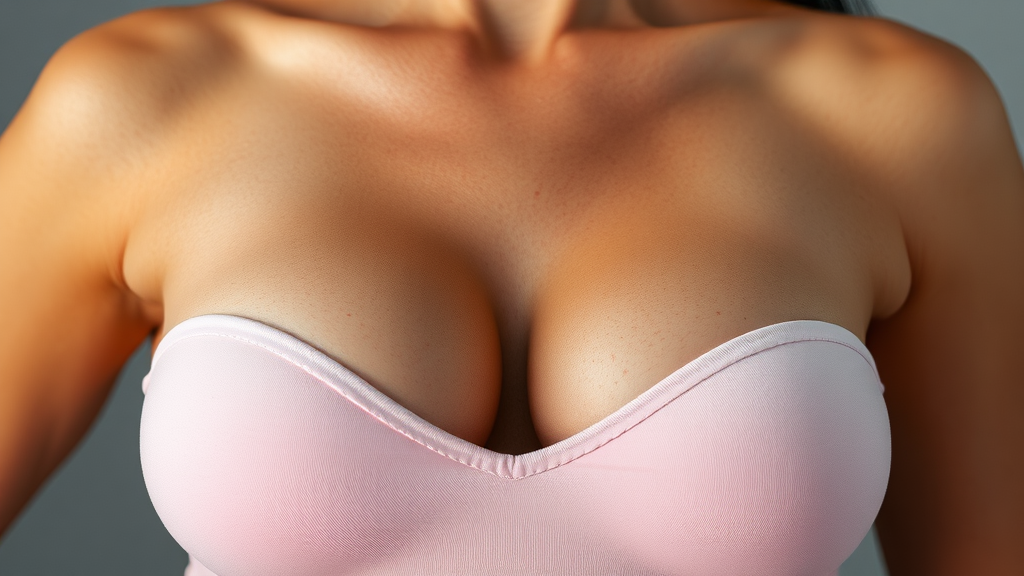The Impact of a Breast Lift on Breastfeeding Success
Many women considering a breast lift often wonder about the procedure’s impact on their ability to breastfeed. This concern is valid, especially if motherhood and breastfeeding are part of their future plans. In this article, we will explore how a breast lift might affect breastfeeding success, debunk myths, and provide clarity on the subject.
A breast lift, also known as mastopexy, involves reshaping and elevating the breast tissue. The surgery removes excess skin and tightens surrounding tissues to give breasts a more youthful appearance. The procedure can help address sagging due to factors like aging, weight loss, or pregnancy. But how does this surgery influence breastfeeding?
First, let’s consider the anatomy involved in breastfeeding. The ability to produce milk and effectively breastfeed mainly depends on the glands, ducts, and nervous system. A few factors might come into play when evaluating the breastfeeding potential post-surgery:
- Incision Type: The type of incision used during the breast lift can play a significant role. Incisions made around the areola or in a vertical line can preserve more milk ducts than those that cut across the breast.
- Preservation of Milk Glands and Ducts: Surgeons often strive to maintain the connection of milk glands to the nipple. If more of these structures are preserved, the likelihood of successful breastfeeding increases.
- Hormonal Changes: Hormonal fluctuations during pregnancy can affect breast size, shape, and milk production. Even after a breast lift, these hormones can still function effectively.
While many women successfully breastfeed after a breast lift, individual results may vary. It’s essential to consider personal circumstances, such as the original breast structure and the surgical technique used. Here are some insights into potential outcomes:
- Many women report no issues breastfeeding after the procedure.
- Some may experience alterations in nipple sensitivity, which could impact the breastfeeding experience.
- Occasionally, women may produce less milk, though this is not universal.
It’s crucial to discuss your concerns with a qualified surgeon during your consultation. They can provide information tailored to your unique body structure and future plans. To further inform your decision, here is a simple table outlining typical experiences among women who have undergone breast lifts:
| Outcome | Likelihood (%) |
|---|---|
| No impact on breastfeeding | 70 |
| Minor reduction in milk supply | 20 |
| Significant breastfeeding issues | 10 |
Maintaining open communication with your doctor can help in planning not only for the cosmetic aspect of breast surgery but also for your future breastfeeding journey. They can clarify what surgical techniques might be best for preserving breastfeeding ability.
Moreover, postpartum experiences vary widely. Some women might face challenges that are unrelated to previous surgeries. Factors such as infant latch, maternal stress, and overall health can greatly influence breastfeeding success. Therefore, it’s crucial not to attribute difficulties solely to surgical history.
While a breast lift may carry some risk of affecting breastfeeding, many women are still able to nurse successfully after the procedure. Prioritizing a consultation with a skilled surgeon will guide you in making informed choices about both your aesthetic and maternal plans. Having realistic expectations and seeking advice tailored specifically to your needs can lead to a happier outcome, whether that involves breastfeeding or exploring other options.
For those considering a breast lift, it’s essential to weigh the importance of physical appearance against potential breastfeeding outcomes carefully. Focus on what will work best for your body and future family planning, and remember that the process is personal and unique to everyone.
Factors to Consider Before Undergoing a Breast Lift for Nursing Mothers
Deciding to undergo a breast lift is a significant decision, especially for nursing mothers. It’s vital to consider several factors that can influence both the procedure and its outcomes. Understanding these aspects can help you make an informed choice that aligns with your breastfeeding goals.
Impact on Breastfeeding Ability
One of the primary concerns for nursing mothers is whether a breast lift will impact their ability to breastfeed. While many women successfully breastfeed after the procedure, several factors can affect this outcome:
- Incision Location: The type of incision used during the surgery can play a crucial role. A periareolar or anchor incision may carry a higher risk of affecting milk ducts.
- Technique Used: Techniques that spare the breast tissue may help preserve breastfeeding capability compared to more invasive methods.
- Individual Anatomy: Every woman’s anatomy is unique. Some may have a better chance of breastfeeding post-surgery than others.
Timing of the Surgery
Timing is essential if you’re considering a breast lift while planning to nurse. Here are points to consider regarding timing:
- Current or Future Pregnancy: If you plan to have more children, it may be wise to wait. Subsequent pregnancies can alter the results of a breast lift.
- Nursing Duration: Once you feel ready to stop breastfeeding, it might be the right time to consider the surgery to ensure the best outcomes.
- Milk Supply: Waiting until your milk supply is established can also provide more stable breast tissue to work with during the procedure.
Health Considerations
Before undergoing the procedure, assessing your overall health is essential. Consult your healthcare provider regarding the following:
- Breast Health: Ensure there are no underlying conditions that may complicate the surgery or affect breastfeeding.
- Previous Surgeries: Discuss any past surgeries related to the breasts that could impact your lift.
- Medical Conditions: Conditions like diabetes or autoimmune disorders may affect healing.
Consultation with a Specialist
Choosing to have a breast lift requires a detailed consultation with a qualified specialist. Here are areas to discuss during your appointment:
- Experience with Nursing Mothers: Ensure the surgeon has experience performing breast lifts for women planning to breastfeed.
- Reviewing Photos: Ask to see before-and-after photos of their previous patients to set realistic expectations.
- Personalized Plan: Seek surgeons who are willing to customize the surgery based on your unique needs and future breastfeeding plans.
Potential Risks and Complications
Every surgical procedure carries risks. Being aware of potential complications associated with breast lifts is critical:
- Infection: Like any surgery, there’s a risk of infection that could impact milk supply.
- Scarring: Consider the potential for permanent scars based on the incision method.
- Changes in Sensation: Breast lifts may lead to temporary or permanent changes in breast and nipple sensation.
Personal Emotional Readiness
Ensure you are emotionally prepared for the changes a breast lift may bring. Here are some factors to assess:
- Body Image: Reflect on how a breast lift aligns with your self-image and personal goals.
- Nursing Satisfaction: Think about your breastfeeding experience and how a lift may or may not align with your feelings about nursing.
- Support System: Ensure you have a solid support system in place for recovery and managing any emotional impacts.
A breast lift can be a fulfilling choice for many women, but nursing mothers need to carefully evaluate numerous factors beforehand. By understanding the potential impacts on breastfeeding, the timing of the procedure, health considerations, and the importance of consulting with a specialist, you can make a well-rounded and informed decision that fits your future breastfeeding plans.
Conclusion
When considering a breast lift, it’s essential to weigh the potential impact on breastfeeding success. While many women can successfully breastfeed after the procedure, individual results may vary based on the extent of surgery, technique used, and personal anatomy. Understanding these factors can help you prepare for the journey ahead.
Before undergoing a breast lift, nursing mothers should consider their breastfeeding goals, the timing of the surgery, and any potential effects on milk supply. Consulting with a qualified surgeon who prioritizes your unique circumstances is crucial. They can provide insights tailored to your specific situation, helping you make an informed decision.
Ultimately, the choice to have a breast lift is a personal one, shaped by your desires and needs. While the procedure can enhance your confidence and alter the look of your breasts, it’s vital to consider how it might impact your ability to nurse. If breastfeeding is a significant goal for you, discussing this openly with your doctor will ensure you receive the best possible advice. Remember, each mother’s journey is unique, so focus on what feels right for you. With the right knowledge and support, you can navigate this decision confidently, embracing both your aesthetic desires and your commitment to nurturing.

































